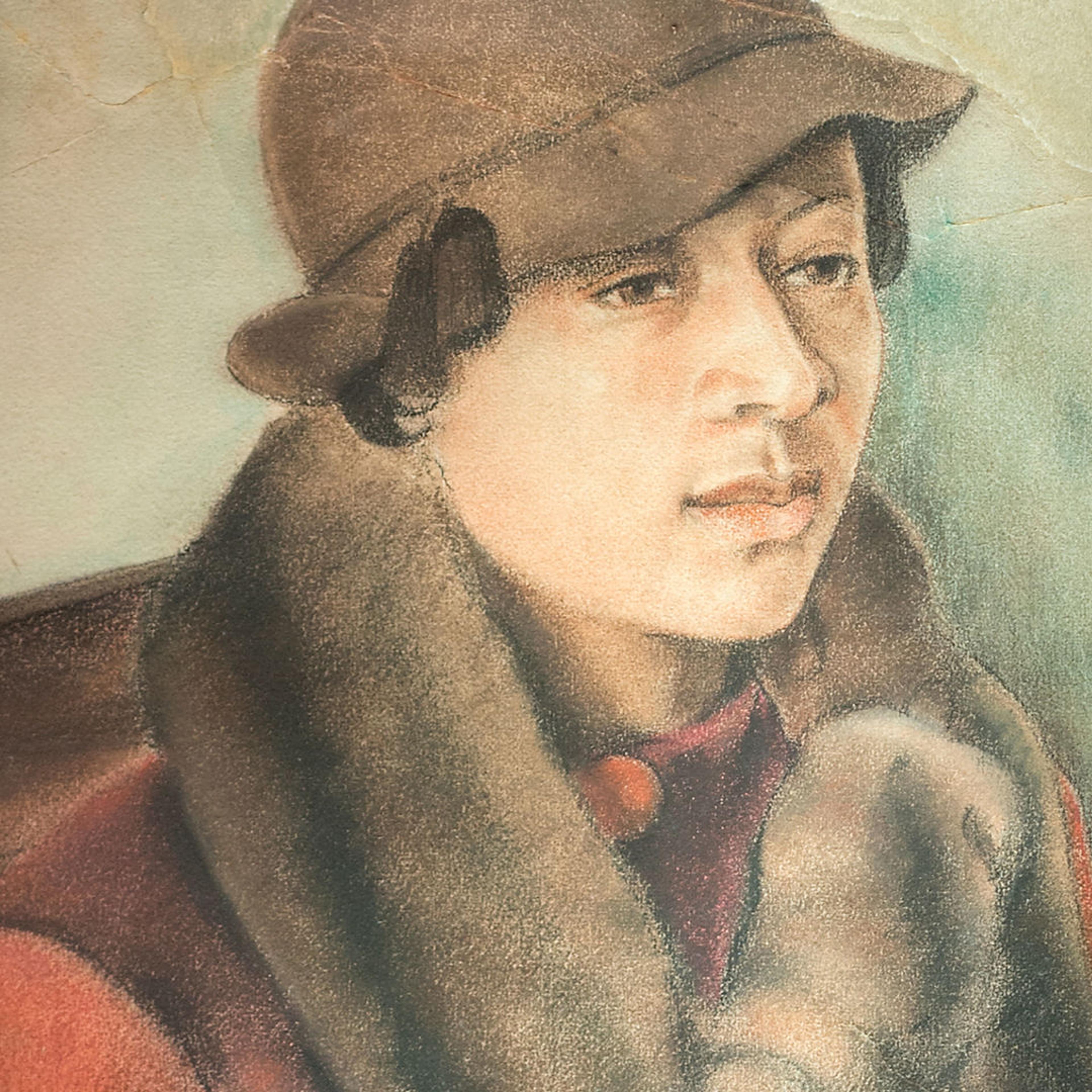How did the literature of the Harlem Renaissance play a central role in conversations around Black identity? In this episode we’ll learn about publications like Opportunity, The Crisis, and Fire!! which each promoted a unique political and aesthetic perspective on Black life at the time. We’ll learn about Langston Hughes and Zora Neale Hurston before they became household names and explore how collaboration and conversation between artists, writers, and scholars came to define the legacy of the Harlem Renaissance.
Follow Harlem Is Everywhere wherever you listen to podcasts:
Listen on Apple Podcasts | Listen on Spotify | Listen on YouTube | Listen on Amazon Music
Visit The Harlem Renaissance and Transatlantic Modernism through July 28.
Supported by

Transcript
VOICE 1: Night wears a garment,
VOICE 2: All velvet soft, all violet blue . . .
VOICE 3: And over her face she draws a veil
VOICE 1: As shimmering fine as floating dew . . .
VOICE 4: And here and there
In the black of her hair,
JESSICA LYNNE: The subtle hands of Night
Move slowly in their gem-starred light.
That was “Street Lamps in Early Spring” written by Gwendolyn Bennett in 1926.
Welcome to Harlem Is Everywhere brought to you by The Metropolitan Museum of Art. I’m your host Jessica Lynne. I’m a writer and art critic. This is episode three: Art and Literature.
Today writers like Langston Hughes and Zora Neale Hurston seem fully present in our minds as staples in the canon of American literature. But there was a time when they were young and eager, stretching their wings and finding a voice, hoping to place their work in publications like The Crisis, Opportunity,and Fire!!.
All three of these publications shared a goal of amplifying the voices and images emerging from the Harlem Renaissance. But they didn’t always agree on what stories to tell or who they wanted to tell them to. It was beautiful and it was complicated.
There are just too many talented people from this era to cover in one episode. We’ll speak about members of the younger generation like Hughes and Hurston and we’ll point out foundational figures like Alain Locke, W. E. B. Du Bois, Charles Spurgeon Johnson and Jessie Redmon Fauset.
We’ll hear from researcher and educator Monica L. Miller:
MONICA L. MILLER: When Hurston walked in the door, she famously had a red feather boa on, threw that feather boa over her shoulder, and said the words, “Color struck!”
LYNNE: We’ll also speak with writer and professor John Keene:
JOHN KEENE: The writers of Fire!! were not concerned with presenting neat bourgeois representations of Black people.
—
LYNNE: In the fall of my junior year of high school, all the adults around me wanted a real answer to that existential question: “So, what do you want to do with your life?”
Everyone needed an answer to this question and I was drawing a blank.
Around this time my English teacher assigned Zora Neale Hurston’s novel Their Eyes Were Watching God. I still have my high-school copy with the black-and-white portrait of Hurston taken by the photographer Carl Van Vechten. In it, Hurston wears a wide-brimmed hat tilted slightly to the right side of her face and a chunky, beaded necklace. I still need this necklace. Her smile is alluring, almost mischievous.
I felt so alive after reading Hurston’s words. I wanted to know everything about this Black Southern woman who depicted on the page so much of what was familiar to me as a Black Southern girl—even if I was living almost sixty years in the future.
Her characters were speaking a Black American English that I’d heard all my life and Hurston took special care to write dialogue in that vernacular throughout the novel.
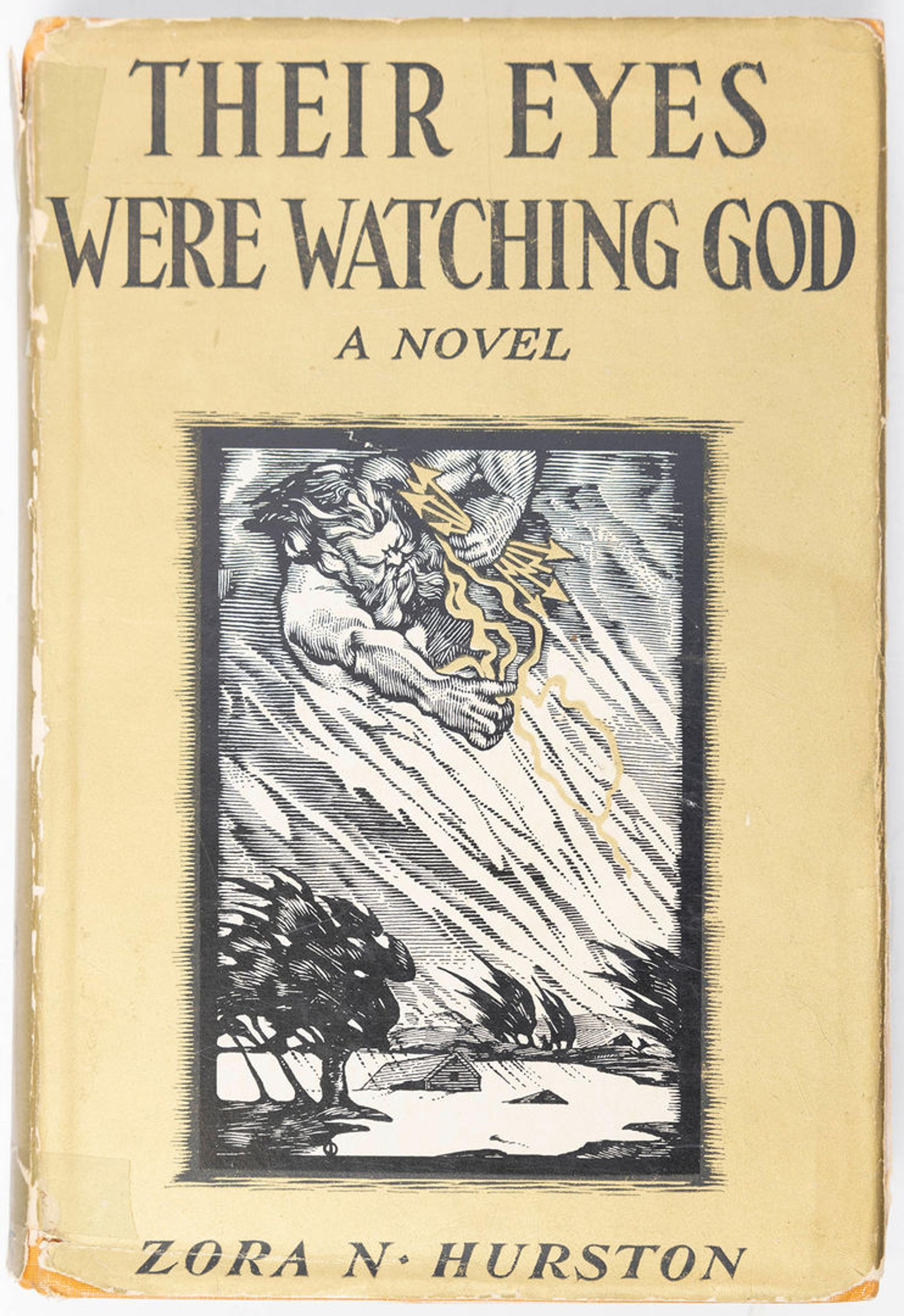
Zora Neale Hurston (American, 1891–1960). Their Eyes Were Watching God, 1937. Walter O. and Savannah Evans Collection
You know that opening scene when Pheoby meets Janie on the back porch with a plate of food, ready to sit and visit a while? I had seen all the women in my life problem solve and caretake or gather together in much the same way.
So, what did I want to do with my life? I wanted to do whatever Hurston had done. And that included living in New York.
I had known what the Harlem Renaissance was, but immersing myself in Hurston’s life gave me a better sense of the Harlem that she’d encountered in the 1920s, and how it impacted her as an artist.
This was a Harlem that was opening its arms to Black folks from everywhere, including the South, and in doing so was fundamentally changing the cultural landscape of a nation.
If Harlem, if New York, was a place that was special enough for my newfound literary hero, it was special enough for me, too. What was it about these streets and avenues that made Hurston feel at home? How did this uptown neighborhood become the epicenter of the world’s first Black-led modern art movement? In a way, if I wanted to understand Hurston, I needed to understand Harlem.
—
LYNNE: Monica L. Miller is a professor of English and Africana studies at Barnard College, Columbia University.
MILLER: I teach and research African American literature and cultural studies, as well as Afro-diasporic literature and cultural studies. So, my work spans Black identity and culture from the United States into Europe.
LYNNE: In the early 1900s two major civil rights organizations created and distributed literary publications—the National Urban League promoted Opportunity magazine while the NAACP released The Crisis. These publications had two main goals: to promote the values of the organizations and to offer a platform for established as well as younger Black artists to shine.
MILLER: What was really important about those magazines is that they were as part of the sort of early Black press movement magazines that included news, that included history, artwork, and often literature. So they were really important in terms of being a place where African American community was actually sort of talking to itself, right? And then ultimately you could sort of get the pulse of what was happening.
LYNNE: Not only what was happening in Harlem, but also in other major urban centers in the Northeast. These cities were becoming the home of so many people as a result of the Great Migration. These magazines were knitting together a community of people, similar to how Black-owned newspapers had done in the late 1800s.
MILLER: What was different about these journals, though, is precisely the way that they included the arts and literature.
LYNNE: These publications, like the people they represented and spoke to, weren’t a monolith. They were a mosaic of different styles and themes, ideals, and voices.
Opportunity was almost an extension of The New Negro anthology. This was a publication that looked to shape Black modernity in a powerful way. Charles S. Johnson acted as the editor while Alain Locke helped develop the magazine and was a frequent contributor.
The Crisis was created by W. E. B. Du Bois with Jessie Redmond Fauset acting as the editor.
MILLER: The Crisis is ultimately a relatively—I mean, I think we think about it now, but not at the time—a relatively conservative publication in the way that it balanced both, sort of, internal and external politics.
Du Bois was a proponent of respectability politics, which meant that he was really interested in putting, sort of, the best foot forward. He was very concerned about remaking the image of African Americans, both for themselves, but particularly for a sort of outside audience. So, The Crisis was a magazine that reflected those ideals and ideologies.
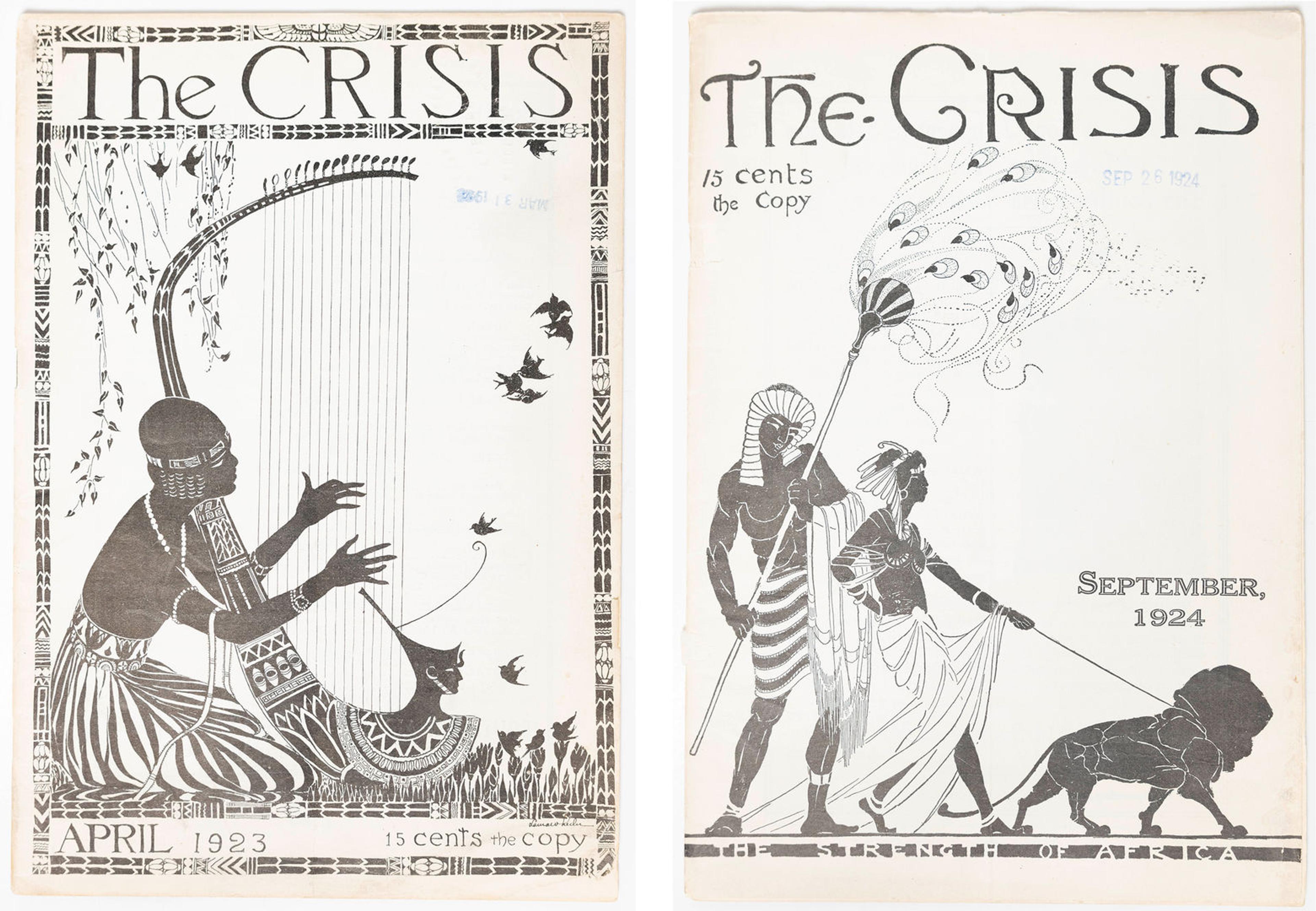
Left: Laura Wheeler Waring (American, 1887–1948). Egypt and Spring, Cover of The Crisis, April 1923. Collection of Walter O. and Linda Evans; Right: Laura Wheeler Waring (American, 1887–1948). The Strength of Africa, Cover of The Crisis, September 1924. Collection of Walter O. and Linda Evans
MILLER: When I look at the cover of The Crisis what I’m seeing there is this idea about Africa being the sort of classical base for African American art and culture. If Europe has the Greek and Roman past, African America has the African past. So, we see Egypt and a kind of Africanized version of Greece, which is really fascinating.
LYNNE: The cover of the February 1925 issue of Opportunity by artist Winold Reiss represented a new approach to thinking about West African aesthetics.
The cover features an illustration of a traditional mask framed by geometric patterns in yellow and black.

Winold Reiss (American, born Germany 1886–1953). Cover of Opportunity: Journal of Negro Life, February 1925. Collection of Walter O. and Linda Evans
MILLER: We’re being asked to think about African America as modern, but almost as modern sort of being borrowed and in conversation with the way that Modernist—capital M Modernist—artists had been thinking about and using African aesthetic forms.
LYNNE: Fire!! was something altogether different. The November 1926 cover by Aaron Douglas is of a sphinx and other abstract symbols on a completely black background. This cover demands attention.
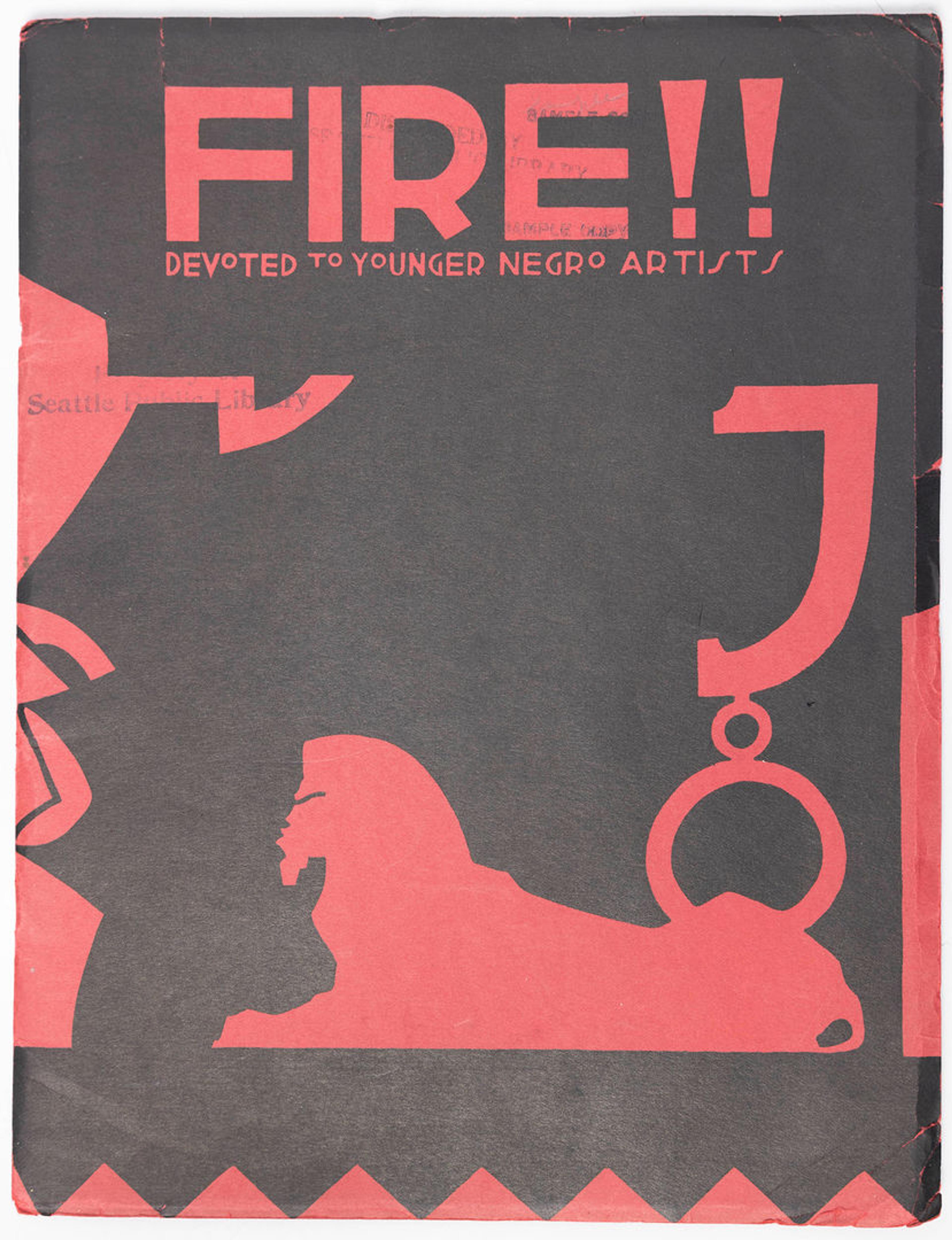
Aaron Douglas (American, 1899–1979). Cover of Fire!!, November 1926, Edited by Wallace Thurman. Collection of Walter O. and Linda Evans
MILLER: Here we’re sort of thinking about Africa in an avant-garde way, Like it’s really we’re supposed to be thinking like, oh, you know, this is exciting, this is maybe a little kind of outré. Like, it’s exotifying in some ways, but for the purpose of attraction.
LYNNE: While Opportunity and The Crisis represented more “respectable” values on their covers and in their pages, Fire!! was not at all remotely interested in respectability. It was a place for younger artists to discuss controversial topics like sexuality that the older guard might deem taboo. Here’s John Keene.
KEENE: The writers of Fire!! were not concerned with presenting neat bourgeois representations of Black people. They were interested in—you know, and of course it’s to our benefit—presenting a richer and fuller portrait of Black life at that moment.
So you get representations of working-class and poor Black people. You get representations of the struggles of the Black bourgeoisie. You get overt critiques of racism and White supremacy. You get, for example, with Richard Bruce Nugent, one of the very first works that deals with Black queer sexuality.
MILLER: The legend around Fire!! is that Wallace Thurman, who was a young writer who had come to Harlem from Los Angeles, and Bruce Nugent—who was perhaps the youngest person who was active in the Harlem Renaissance at that time, who had just come to New York from Washington, D.C.—both of them queer men, that they flipped a coin. And whoever got heads was going to write the story about prostitution and whoever got tails was going to write a story about homosexuality. And those were the two stories that they wanted to sort of anchor Fire!! magazine around, which was going to be which was going to be and ultimately turned out to be incredibly controversial at the time.
LYNNE: The artists and writers of Fire!! weren’t simply trying to find an audience amongst their peers. They represented the interests and ideas of an entire generation. A generation less concerned with signaling middle-class values and more concerned with honest expression.
Keene: The Harlem Renaissance writers and artists represented really, you know, Black America at that moment in the urban North in New York. So, you had writers, you know, who were from the West Indies, you had the Caribbean, you had writers who were born in the South. You had writers from New York itself, right, and other northern urban centers. So, you get this incredible mixture of people. And so respectability kind of went out the window!
MILLER: So Fire!! is for the younger Negro artists who want to, as Langston Hughes said in his essay, “The Negro Artists in the Racial Mountain,” who want to express themselves freely. And they don’t care if Black people like it, they don’t care if White people like it. That they’re doing it, right, to be what he said, “free within themselves.”
So, Fire!! is this magazine that includes just like The Crisis and Opportunity essays, poetry, artwork, history. But it does it from a decidedly radical point of view. Ironically, there was only one issue of Fire!! because the issues that were being stored to be sold all over the East Coast or as far as they could get the magazine burned up in a fire.
LYNNE: Yes… Fire!! magazine’s life was cut short due to a fire. But the bond and creative energy that existed amongst the younger generation stayed intact.
MILLER: The younger group of Negro artists who were part of Fire!! magazine were all kind of located in an apartment that was rented out by a sort of older woman in Harlem who was really interested in fostering the arts. Her name was Iolanthe Sydney. She rented apartments at a discount to artists. Aaron Douglas lived in this apartment. I think Bruce Nugent lived there on and off. Hurston was there occasionally. Wallace Thurman was there, Langston Hughes was there.
So, this apartment was was a place where… that was a salon of the younger Negro artists. Important, though, in that apartment was, because of Aaron Douglas and also Bruce Nugent, who were visual artists. The walls were painted by Douglas. There were drawings all over the place that were made by Bruce Nugent. He was the only, sort of, out gay man in the Harlem Renaissance, so his drawings and artwork were very provocative at the time. A lot of naked bodies and sensual depictions of the African American body.
So, they lived in a space that was filled with art, the writers. And the artists lived in a space that was filled with words.
LYNNE: The collaborative spirit of these visual and literary artists allowed their mediums to collide. A chance to explore subjects considered scandalous, and to simply let go.
John Keene has seen this in his own projects.
KEENE: I’ve done two books with visual artists, one of whom is also an amazing poet and one of them is an amazing photographer. I just did a poster with another wonderful photographer. And I feel like one of the things that I gain is a sense of depth, a deeper appreciation for the other mediums and for the medium I’m working in, right?
So, working with a visual artist you come to understand how they see the world, how they see the process of making art. And it informs my own work as a writer, and I believe the reverse is true, as well. The other thing too, I think, that I love about collaboration is it involves a certain amount of surrendering of the ego. You have to step back from the “I” and think in terms of “we”—how can we create—which I think is a great spur for creativity.
LYNNE: Ultimately, these publications were more similar than they were different. Each was dedicated to promoting the arts and literature of the Harlem Renaissance and the artists central to this movement and each had important figures behind their success.
One of them is Jessie Redmond Fauset, a novelist, poet, critic, and editor of The Crisis who is sometimes overshadowed by her male counterparts.
MILLER: Fauset is an incredibly important person in the Renaissance because of the way that she edited that magazine and also solicited work from writers and also encouraged them—like Charles Johnson and Alain Locke did for the Opportunity contest—really fostered a kind of literary environment. And ultimately, she and other people were part of many different kinds of salons that were taking place both in New York and also in Washington, D.C.
LYNNE: The Crisis and Opportunity not only provided a platform through commissioning artists for cover illustrations, they also sponsored contests for writers.
MILLER: And these contests were important because they not only supported artistic work and recognized it, but they were often the vehicle through which many of the writers that we associate with the Renaissance came to New York.
LYNNE: James Mercer Langston Hughes was born in Missouri and grew up in various midwestern towns. Raised mainly by his maternal grandmother he developed a love of words early.
While in high school he began to compose the first of a lifetime of short stories, poetry and plays. In his early twenties Hughes moved to New York City to attend Columbia University. Around this time he submitted a poem to The Crisis. It was called“The Negro Speaks of Rivers.”
He’d written it as a teenager on a train crossing the Mississippi River. Writing the poem down on the back of an envelope, it seemed to flow out of him like the waters below. You can almost picture him reading the poem softly under his breath as the train headed south.
Here’s Hughes in his own voice reading the “The Negro Speaks of Rivers”:
LANGSTON HUGHES:
I’ve known rivers:
I’ve known rivers ancient as the world and older than the flow of human blood in human veins.
My soul has grown deep like the rivers.
I bathed in the Euphrates when dawns were young.
I built my hut near the Congo and it lulled me to sleep.
I looked upon the Nile and raised the pyramids above it.
I heard the singing of the Mississippi when Abe Lincoln went down to New Orleans, and I’ve seen its muddy bosom turn all golden in the sunset.
I’ve known rivers:
Ancient, dusky rivers.
My soul has grown deep like the rivers.
LYNNE: Did he realize that what he’d just written would catapult his career and become one of the defining poems of the era? Hughes ended up submitting this poem to The Crisis after arriving in New York as a twenty year old.
MILLER: There are these moments, famous moments, when we think about the Renaissance.
LYNNE: One of those is when, after reading the poem, Du Bois turns to Fauset and says, “What colored person is there, do you suppose, in the United States who writes like that and is yet unknown to us?”
Langston Hughes has been close to John Keene’s heart throughout his own career. Here’s Keene reflecting on a portrait of a then twenty-four-year-old Hughes by German-born artist Winold Reiss.
This portrait features a young Hughes in a sharp suit seated at a desk with a notebook open… as if the viewer is watching the writer at work. Hughes looks into the distance, in contemplation.
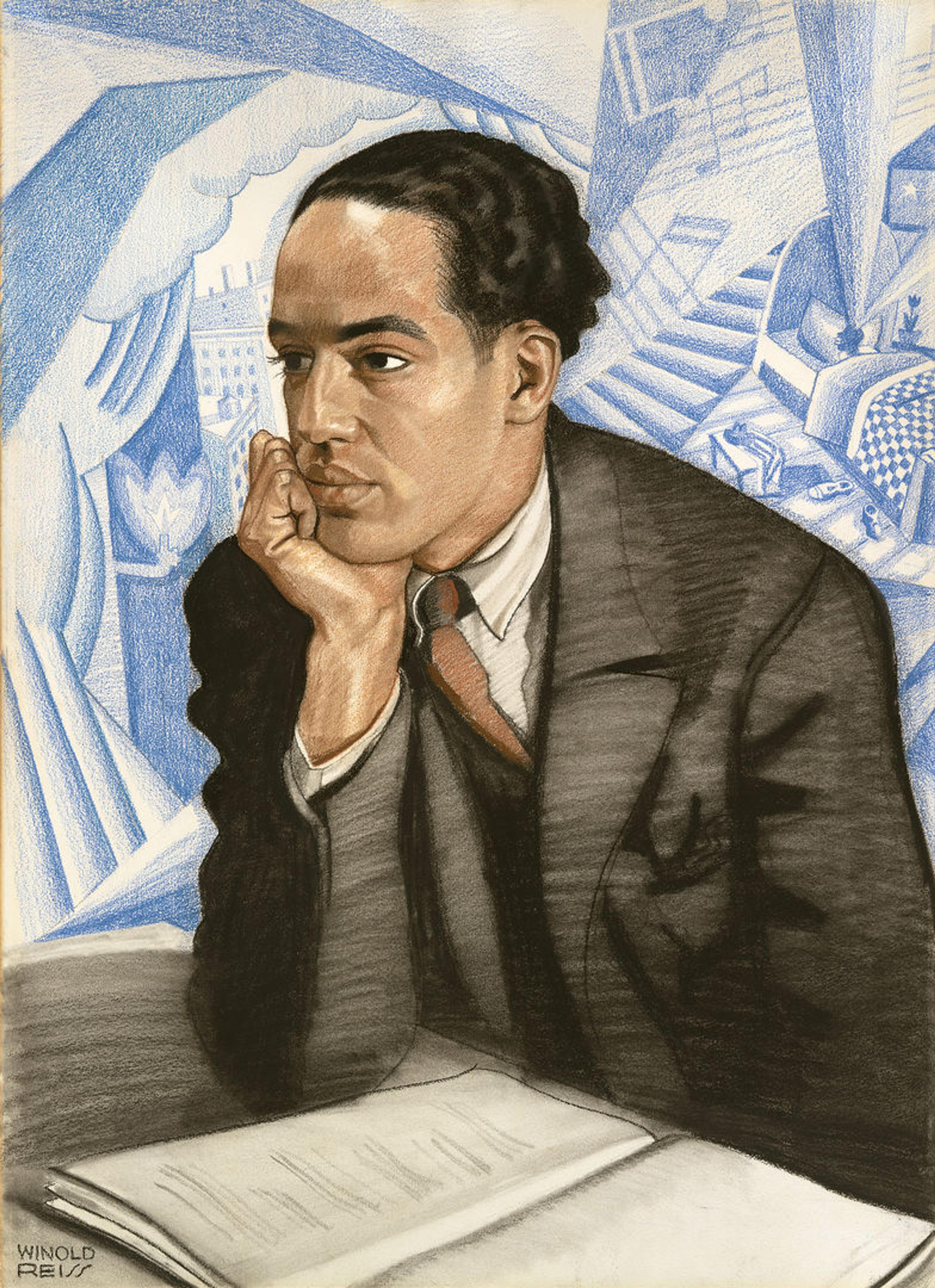
Winold Reiss (American, born Germany, 1886–1953). Langston Hughes, 1925. Pastel on illustration board. National Portrait Gallery, SMITHSONIAN INSTITUTION, Washington D.C.; Gift of W. Tjark Reiss, in memory of his father, Winold Reiss
KEENE: One of the things that it sort of signifies is his centrality, right? He was someone who was a kind of connecting figure for so many different members in what became the Harlem Renaissance, right? But even at his very young age, he was, I think, sort of establishing himself as one of the premier poets of his generation. So it’s sort of fascinating to see, you know, someone capture him at that young age, but also to kind of show the range of who he was through the juxtaposition of the images in the painting. The Cubism in the background and, of course, the pensive young poet in the foreground.
LYNNE: John Keene loves Hughes’s poems, for their approachability, humor, and lyricism.
KEENE: I think it was a combination of the poems’ musicality, their artistry. He’s very gifted in concision, their humor. And also the poems have a political bite. And you don’t have to be, you know, super sophisticated, you can be a child and pick up what he’s saying. So you get all of those elements together, and they make for very powerful and compelling poetry.
I probably encountered Langston Hughes’s poetry first as a small child from my parents and godparents and had been a fan of and loved Hughes’s work ever since.
LYNNE: John Keene didn’t need any prompting recalling Langton Hughes’s poem “Harlem.”
KEENE: So, the opening line, of course, is:
What happens to a dream deferred?
Does it dry up
like a raisin in the sun? — Which, of course, provided Lorraine Hansberry with the title for her great play…
Or fester like a sore—
And then run?
Does it stink like rotten meat?
Or crust and sugar over—
like a syrupy sweet?
Maybe it just sags
like a heavy load.
And then that final line:
Or does it explode?
LYNNE: Hughes had caught the attention of Du Bois and Fauset at The Crisis. Meanwhile, Hurston made a splash with the editors of Opportunity.
Hurston had previously been published in Opportunity. But in 1925 she entered a short story called “Spunk” and a play called Color Struck to one of the magazine’s literary contests. She won second place in both categories.
Another one of those famous moments in the history of the Harlem Renaissance was at the party celebrating this contest, when Hurston made her debut.
MILLER: When Hurston walked in the door, she famously had a red feather boa on, threw that feather boa over her shoulder, and said the words, “Color struck!” Which was actually the name of the play that she had won second prize for. The whole room turned to look at her. She announced her presence in Harlem with that gesture.
LYNNE: Zora Neale Hurston would become a force of the Harlem Renaissance and American literature more broadly. That night she met Langston Hughes, who would become a great friend. And she made another connection with Barnard College founder and trustee Annie Nathan Meyer.
Monica: And Annie Nathan Meyer, after seeing Hurston circulating in the party, said, you know what? I think that woman is the woman I want to see if I can integrate Barnard College with.
Hurston became Barnard’s first Black student after meeting Annie Nathan Meyer that evening. And for Hurston, securing an education was actually sort of everything. So moving into that room, making that impression, meeting her sort of, you know, soulmate in Langston Hughes, and this vehicle towards education and her ultimate career as both a writer and an anthropologist… Opportunity magazine gave her that opportunity.
LYNNE: She would go on to study anthropology and become the first Black graduate of Barnard College. After getting her degree Hurston wanted to return to the South, where she’d grown up, to document Southern Black life: its folk tales, songs, and stories.
After receiving funding, Hurston drove down South in a little coup nicknamed “Sassy Susie.”
MILLER: There’s a great photograph of her in front of her car with a gun in a holster because she was traveling through the South primarily alone and occasionally needed to to feel protected. Also the car, because sometimes there were not places where a Black person or Black woman in particular could stay—she would stay in the car.
This photograph is a beautiful contrast to a painting found in the exhibition titled Miss Zora Neale Hurston. The portrait, by Aaron Douglas, not only captures another side of Hurston but also a different style than the modern, geometric approach typically associated with Douglas.
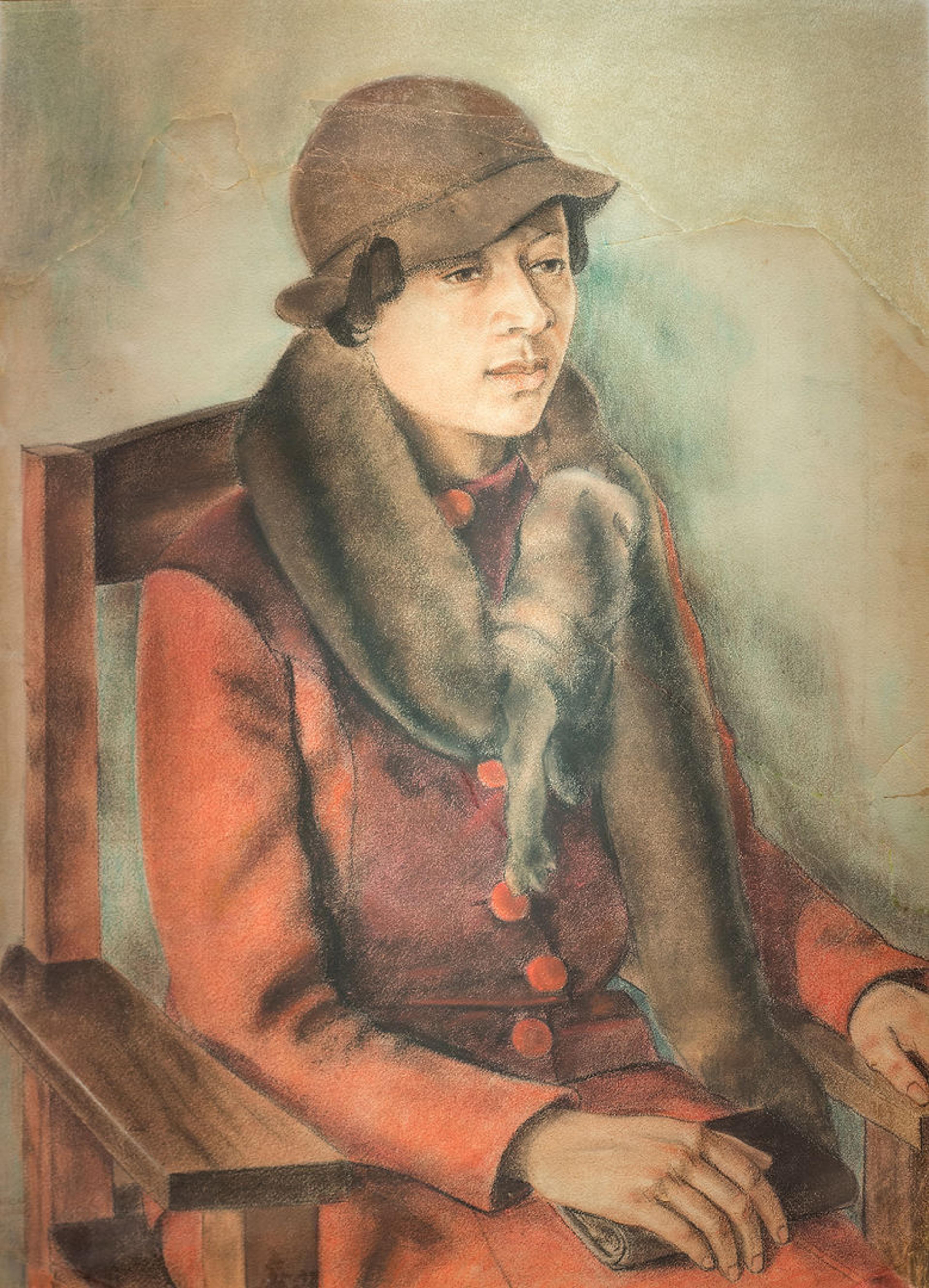
Aaron Douglas (American, 1899–1979). Miss Zora Neale Hurston, 1926. Pastel on canvas. Fisk University Galleries, Nashville
MILLER: We have Hurston sitting in a chair and there’s a certain kind of dark brownness to the wood. So I’m really interested in the many many tones of brown that are in the painting. She’s wearing a brown kind of cloche hat, she’s got a little fur, and her coat is brown. So, it’s a sort of study in brown, which I think is really beautiful because it’s bringing out her skin tone.
What I also really like about this painting is the expression on Hurston’s face. She seems like she is relaxed and thinking and in the company of a friend. We think of Hurston as a person who has a lot of energy. Like, she just had tremendous energy. And this portrait is one of her where she’s calm, relaxed, and at ease.
LYNNE: It’s a refined, quiet portrait—a far cry from Hurston the pistol-totin’, Sassy Susie–driving, anthropological researcher….
During this time Langston Hughes was also down South.
MILLER: So Hurston was down in the South doing field work, collecting stories and folk songs. Trying to sort of study African American culture in a way that it hadn’t really ever been studied before and preserve it. And Langston Hughes was visiting Tuskegee Institute and giving a reading of his poetry. And they kind of got on the road together.
And the way that Hurston was traveling is that she was not traveling to universities. She was traveling to, you know, work camps, work sites, small Black communities where she could listen to stories and talk to ordinary Black people about their lives, you know, record their speech, their metaphors. I mean, all of the things that she called the characteristics of Negro expression. So they were really sort of out in smaller communities and rural communities driving around in Hurston’s car.
LYNNE: These two writers and their lives embody how the writings of the Renaissance traveled. It wasn’t work that only found an audience in the cosmopolitan North. It spoke to and resonated with these rural communities in a way that’s not surprising.
MILLER: Hurston’s collecting stories. Hughes is reading his work and interacting with people. So, in terms of how some of the Harlem Renaissance poetry and literature was received in other places, it was embraced.
LYNNE: The writings of the Harlem Renaissance traveled far and wide and covered many themes. The essays, novels, short stories, poems, and plays created during this time spoke to audiences in Europe, the Caribbean, and beyond about life in the rural South as well as the industrialized cities of the North.
The writer Nella Larsen tackled topics like colorism in her classic novel Passing. Other writers, like Claude McKay or Countee Cullen, found inspiration in themes of sexuality, alienation, and racial pride. There are so many incredible writers from the Harlem Renaissance to research and enjoy. Their contributions radically changed and inspired the written word and we can see, feel, and read their influence in so many writers today.
KEENE: We get a deeper sense of Black experience, Black interiority, Black subjectivity in a way that we had not seen before. So, I think that the Harlem Renaissance writers really opened up a lot of doors, a lot of windows for their peers and for all the writers who follow. Because we’re still, in a sense, walking through the doors that they opened up for us.
—
[Zora Neale Hurston singing “Halimufack”]
LYNNE: You may have had the chance to read Zora Neale Hurston’s work as a writer and an author. But I wanted to share something that feels really special to me as a self-identified Hurston fangirl. Here’s her singing.
[Zora Neale Hurston continues singing]
LYNNE: There’s something about hearing her voice that makes me realize—oh wow. She was a human being, with her own emotions and lived experience and singing voice.
[Zora Neale Hurston continues singing]
LYNNE: “Halimufack” performed by Zora Neale Hurston is available in the Library of Congress.
—
LYNNE: A big thank you to Monica L. Miller and John Keene for spending time with us today. Our next episode will focus on the music and nightlife of the Harlem Renaissance. We’ll talk about the musicians, the brilliant ballrooms, and smokey bars, and the freedom that people found in challenging conventional understandings of sexuality.
Harlem Is Everywhere is produced by The Metropolitan Museum of Art in collaboration with Audacy’s Pineapple Street Studios.
Our senior producer is Stephen Key.
Our producer is Maria Robins-Somerville.
Our editor is Josh Gwynn.
Mixing by our senior engineer, Marina Paiz.
Additional engineering by senior audio engineer Pedro Alvira.
Our assistant engineers are Sharon Bardales and Jade Brooks.
I’m your host, Jessica Lynne.
Fact checking by Maggie Duffy.
Legal services by Kristel Tupja.
Original music by Austin Fisher and Epidemic Sound
The Met’s production staff includes producer Rachel Smith; managing producer Christopher Alessandrini; and executive producer Sarah Wambold.
This show would not be possible without Denise Murrell, the Merryl H. & James S. Tisch Curator at Large and curator for the Harlem Renaissance and Transatlantic Modernism exhibition; research associate is Tiarra Brown.
Special thanks to Inka Drögemüller, Douglas Hegley, Skyla Choi, Isabella Garces, David Raymond, Ashley Sabb, Tess Solot-Kehl, Gretchen Scott, and Frank Mondragon.
Asha Saluja and Je-Anne Berry are the executive producers at Pineapple Street.
###
